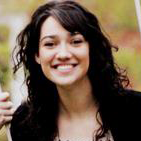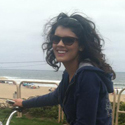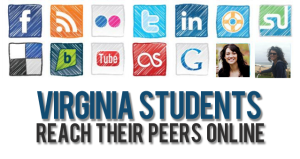Blog
Virginia Students Hone Their Social Media Strategy to Reach Peers
March 27, 2013
98 percent of college students own a smartphone or other digital device and 38 percent say they can’t go for more than 10 minutes without checking it. 66 percent of online users say they use some type of social media — Facebook, Twitter, MySpace, and LinkedIn. Due to this ubiquitous nature of online interaction and social media use, understanding how to reach an audience online is becoming increasingly important for any individual or group looking to make their mark.

Chelsea Rankin, Journalism Student
This includes knowing how to effectively use social media as an outlet for political outreach among the millennial generation: an estimated 58 percent of the U.S. population get their political news from social media. College students Breanna Payton and Chelsea Rankin have seen the opportunity to reach and influence with their peers online and took steps this year to creatively increase interaction with college students through social media.
Payton is a native of California. Chelsea Rankin hails from Connecticut. This semester, they both began an internship in the Office of Communications at Patrick Henry College in Purcellville, Virginia, where both are journalism majors. Both had some experience running Twitter feeds for student clubs but wanted to learn more about how to use social media to reach their audiences.
“Journalism is an extremely competitive field, and with the convergence of media becoming more and more of a reality, it’s more and more important to understand how to use the internet to promote content, and social media is a huge part of that,” Peyton says. “When you’re young, everyone expects you to know how to use the latest social media platforms, so I figured why not go beyond a basic understanding and really learn how to use social media effectively.”
To that end, they turned to American Majority’s social media training. “I learned a lot,” Payton says. “For example, we learned how to identify the social media platform our target audience uses, and then how to use that platform effectively. For students at Patrick Henry College, that’s Facebook.”

Breanna Payton, Journalism Student
Rankin learned the value of keeping up with what other organizations are doing. “They showed us the social media pages of successful companies like Oreo or Coca-Cola who are great at using social media,” Rankin says. “They showed us the kinds of posts that garner the most attention, likes, and shares—images and infographics.”
American Majority trained on how to work with what you have to expand an audience: “Using graphics to communicate information rather than text is a lot more effective,” Payton says. “The graphic will catch people’s eye, and the image will stick with them. People are also more likely to share them with their friends.”
As a result of the training, Peyton and Rankin came up with graphics for the “Newsmaker Interview” series Patrick Henry College held on campus with influential politicians and people, and encouraged students to share the graphic. In addition, they created incentives for students to attend the event and tell others they were going. “Of course, this is college, so we went with food.” They offered donut holes to anyone who attended and mentioned they were at the interview on Facebook. “It helped create buzz about the interviews, and turnout was definitely up,” Payton says.
Both young women have big plans to continue using social media to reach students on their campus. “One of the suggestions we got from American Majority—and one that we’re excited about implementing—is celebrity chat sessions we’re hosting using Twitter,” Rankin says. “It’s a great way for students to connect with conservative big names as well as a way to get attention for the college from the outside world. Students here will be asking some hard-hitting questions. It’s going to be fun.”
Contact American Majority today if you would like to bring an American Majority social media training to your campus or community.
